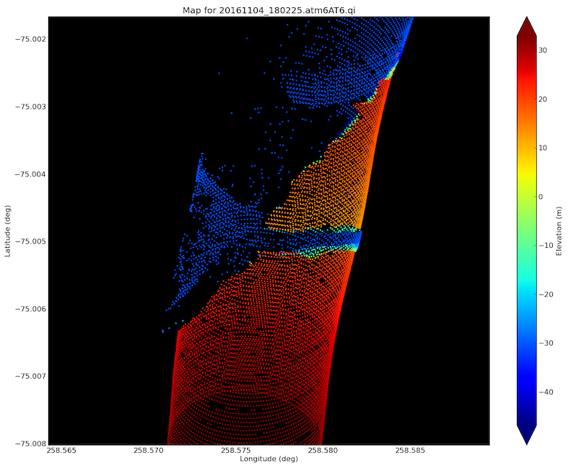A First Meeting with an Old Friend
If you have studied the impacts of climate on Antarctica you have encountered Pine Island Glacier. Tucked in at an angle under the West Antarctic Peninsula handle, this seemingly innocuous glacier has been making headlines for years as one of the fastest flowing ice stream glaciers on Earth.

If you have studied the impacts of climate on Antarctica you have encountered Pine Island Glacier. Tucked in at an angle under the West Antarctic Peninsula handle, this seemingly innocuous glacier has been making headlines for years as one of the fastest flowing ice stream glaciers on Earth. In Antarctica, Pine Island pushes ice at a rapid clip into Pine Island Bay part of the larger Amundsen Sea. So although we have never met face to face, Pine Island is a glacier I have known for years.
Antarctica has two large ice sheets, sensibly labeled the West Antarctic Ice Sheet and the East Antarctica Ice Sheet and separated by the looming Transantarctic Mountains that break through above the thick layer of ice covering much of Antarctic’s surface. In large part West Antarctica is comprised of the Antarctic Peninsula, the handle shaped extension of the continent reaching out towards South America, but below that there is a vulnerable area that drains into Amundsen Sea, one of three catchment areas for this ice sheet. Glaciers in this region have been changing rapidly, led by Pine Island and the neighboring Thwaites. If melted, the ice from Pine Island and Thwaites glaciers together, has the capacity to raise global sea level by up to 2 meters (~7 feet.)

For Pine Island the vulnerability results from a compounding of challenges, a small ice shelf offering little support to the land ice behind and little protection from the warming ocean water that makes its way up onto the shelf. In addition the base of the glacier rests on land that is backward sloping, or tipping back underneath the ice. A retrograde bed, as these are called, allows the warm ocean water access to move back under the glacier, further destabilizing and acceleration ice flow.

At 160 miles of length, and 68,000 square miles of catchment, Pine Island handles the drainage for approximately one tenth of the West Antarctic Ice Sheet. Over the last forty years it has been over-performing, accelerating its flow, and is attributed with one quarter of Antarctica’s current ice loss. In its years of operation (2003-2010), Ice Sat I satellite provided us with a series of measurements for this glacier showing that Pine Island Glacier was moving more ice into the ocean than any other drainage basin worldwide. Since 2009 the IceBridge project has continued this monitoring, extending our data for this region so that we won’t miss critical information while IceSat II is being prepared for a 2018 launch. Pine Island glacier measurements are critically important to help us project global sea level rise.

Pine Island glacier is shrinking. As the glacier has accelerated its flow, the ice stream has thinned and correspondingly the face of the glacier has lost elevation. In some areas ice elevation loss has equaled 4 meters or more a year. The drop in elevation is more quadruple the annual precipitation for the area, and has occurred in both summer and winter.

More bad news may be ahead for Pine Island. Although the glacier does not have a large ice shelf, there is a relatively small shelf that helps to restrain some of the flow from land to ocean. However, in the last decade a fairly significant crack has developed in the shelf threatening to pull off another large chunk of ice and relaxing the hold the shelf has on the ice behind. As we overflew two locations IceBridge surface laser measurements captured the crack depth at 60 and 70 meters deep. This crack has continued to expand over the last few years and it is only a matter of time before this section of shelf will separate moving off into the ocean and leaving the ice shelf more exposed.

IceBridge: Since 2009, the NASA IceBridge project has brought together science teams to monitor and measure each of the ice features in order to improve our understanding of changes in the climate system and our models. Lamont-Doherty, under lead scientists Jim Cochran and Kirsty Tinto, has led up the gravity and magnetics measurements for these campaigns. You can read about earlier IceBridge expeditions to Antarctica and Greenland on State of the Planet, here and here.
Two other project links: http://www.ldeo.columbia.edu/icebridge
http://www.ldeo.columbia.edu/res/pi/rosetta
Save
Save
Save
Save
